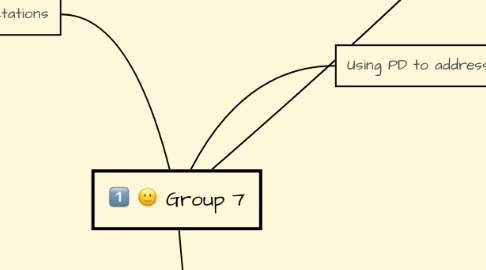
1. Managing Teachers' Expectations
1.1. Deployment
1.2. Workload (Work-Life Harmony)
2. Professional Development: Levelling Up Teachers' Professional Capacities
2.1. Old Staff Profile
2.2. Young Staff Profile (<3 years)
2.2.1. Enthusiastic & willing to be moulded, but may lack the pedagogical approaches
2.2.1.1. Strategy: Create platforms for dialogue sessions so that BTs can share their learning points & reflect individually and collectively
2.2.1.2. Strategy: Protected time for teachers to reflect on T&L processes, classroom management issues, etc. (ME Time, WE Time, PLT time)
2.2.2. May have classroom management issues
2.2.2.1. Strategy: Mentoring through level coordinators (curriculum matters), STs, SSD, SDT (CCE)
2.2.3. Not familiar with demands of EL 2010 syllabus
2.2.3.1. Strategy: Deployment of teachers 1) Level coordinators (with more experience) will guide younger inexperienced teachers around 2) Anchor teachers in the same level to give them time to familiarise themselves with the SOW & resources. (but there may be a lack of rapport with students and a clear idea of their learning needs)
2.2.3.2. Strategy: Involve teachers & IP heads in dept planning process to help young staff in strategic planning to see the end goal(s) in mind
2.2.3.3. Strategy: IP heads, STs/LTs will guide teachers through the process of crafting SOWs
2.2.3.4. Strategy: Use ICT to engage today's young teachers who may want to try things out immediately rather than pore through think syllabus documents. Create 2 year induction pragramme structured protected time to go through CLLIPS and ACoLADE through experienced/ senior EL teachers Create platforms for teachers to share & evaluate how the dept works
2.2.3.5. Strategy: STs/LTs/Experienced teachers/ Level coordinators to familiarise BTs with the LOs & SSABs of the syllabus, as part of the induction programme
3. Using PD to address Department Needs
3.1. Internal scan of learning needs of department: SWOT analysis
3.1.1. What are their years of experience?
3.1.2. What are their strengths and interests?
3.1.3. What are their challenges?
3.2. Two-pronged approach to create an immersive environment
3.2.1. Learning as a Department (based on departmental needs: e.g. assessment literacy to address the setting of Paper 2)
3.2.2. Learning in smaller groups based on their needs
3.3. Example: BTs
3.3.1. Designing a curriculum for BTs that demonstrates an understanding of CLLIPS, ACoLADE and how ICT can be used to enhance teaching & learning of EL
3.3.1.1. Year 1
3.3.1.1.1. Familiar with demands of the syllabus: CLLIPS, ACoLADE
3.3.1.1.2. Incorporate ICT into lessons for deep learning : ICT PD Model
3.3.1.1.3. Deliverables: SOWs and Unit plans, done in conjunction with more experienced teachers (ST/ LT/ coordinators)
3.3.1.2. Year 2
3.3.1.2.1. Assessment literacy
3.3.1.2.2. Deliverables: Sharing lessons with next batch of BTs
3.3.2. What should a BT look like (desired outcomes)?
3.3.2.1. Pin It Down: What are some deliverables we would like to see ?
4. Questions for Rachel
4.1. Could you clarify how teachers are empowered to capitalise on their strengths in the use of ICT?
4.1.1. Heartware: PLT engaged in lesson study during TTT
4.1.2. Sharing of Best Practices during school's Learning Fest
4.1.3. Learning needs analysis: SWOT

